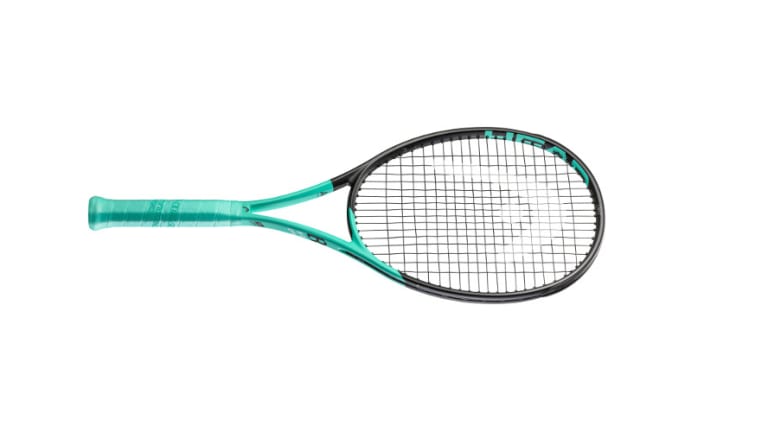If a racquet is called “Boom” it’s bound to be explosive. Head designed its new franchise with an easy power and playability to suit the widest swath of the playing population. Rather than a specialist that focuses on specific traits like speed, spin or control, the Boom is engineered to be user-friendly in almost every category. And if the Boom Pro is any indication, they might be on to something.
The Boom was constructed as a kind of greatest hits of other Head silos, borrowing from lines like the Extreme and Gravity. The head shape is all its own, wider across the shoulders for better power and expanded sweet spot in that area of the hitting surface, and narrowing toward the throat for better feel and control (Morph Beam design). The umbrella technology is Auxetic—a carbon fiber construction in the yoke of the frame to create a uniform and crisp response at contact regardless of impact location on the string bed.
The Pro is the Boom’s heaviest, thinnest and most demanding model. At 11.6 oz. strung, with a 98 square-inch head and a mid 320s swingweight, it’s got the heft and substance to traffic in more advanced playing circles. As such, it does take a healthy cut and skilled hands to make use of its talents. On ground strokes it felt solid at contact and smoothly powered through the ball, supplying shots with weight and depth. The string pattern offered a wide spin window, while still being capable of flattening out the ball for more penetrating shots. Yet, it was the frame’s forgiveness that stood out. Unlike some racquets that offer too much assistance, the Boom Pro seemed to supply just the right amount depending on the situation.
This was particularly apparent when contact was imperfect. With a more classic control frame, these types of shots often spell curtains, landing short and helpless in an opponent’s midcourt. The more modern racquets in this category, owing to firmer layups and thicker beams, will frequently spray poorer contact outside the lines. The Boom Pro managed to consistently get those shots deep in the court, and its user in the point. It was disconcerting at times because shots I anticipated going wrong repeatedly had positive results. All things considered, I was pleased to have such poor judgment.
Serving is less about forgiveness and more about bringing added mph to the line, and the Boom definitely injected some burst. When I wanted to step on a delivery, there was ample acing thump without having to come out of my shoes. And when a more sensible serve was in order, it had enough inherent power and spin to still make an impression. Unlike my ground strokes, though, it did take a little more time to get dialed-in. I couldn’t hit my spots quite as well, and resorted to bigger targets. However, I believe it was more of a matter of acclimation than a deficiency in the frame.
